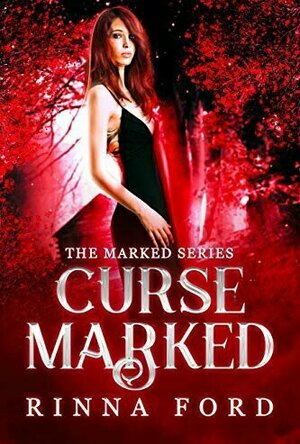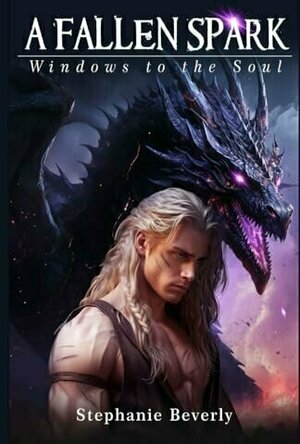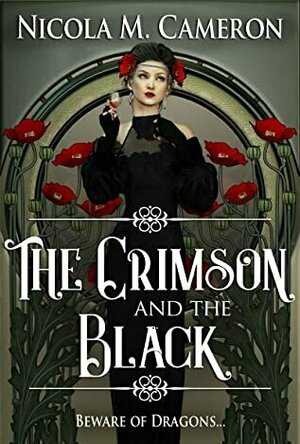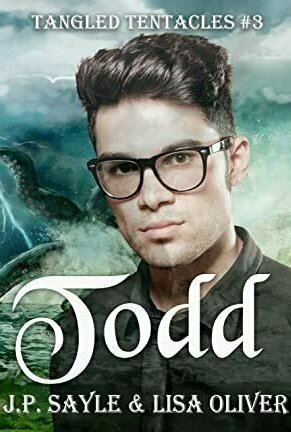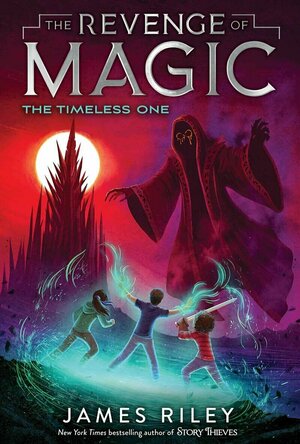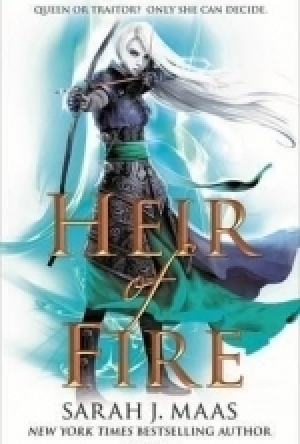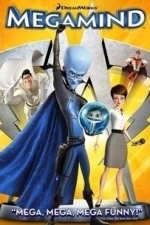Search
Lyndsey Gollogly (2893 KP) rated Curse Marked ( The Marked series book 1) in Books
Jan 31, 2020
Highly recommended
Contains spoilers, click to show
She doesn’t know anything about herself before the age of thirteen. Even the name she now answers to is not her own, but that isn’t the strangest thing about her.
Anne Smith was found on the steps of a homeless shelter with no memory of her life before that moment and a small tattoo-like mark in the center of her back that has grown and changed with each new moon. It’s been almost fifteen years, and the now the mark covers almost every inch of skin on her back.
With good reason, it’s impossible for her to let anyone in, to let anyone get close. Who would believe that her mark burns itself into her skin every twenty-eight days, leaving it larger than before? But, what if there was not only someone who believes her but has the answers to the questions that she desperately wants to ask? Would she finally be able to let people in?
The mark is almost complete. What will happen when there’s no more room left to grow?
Curse Marked is the first story in a medium-burn reverse harem series. Due to strong language and sexual situations, it is recommended for 18+.
I loved this book! I love the whole story! It's non stop action and so easy to follow and read in a good way. From Emelia finding her Uncle, his boyfriend to learning who she is and what she can do. Finding out her powers are so strong from the Dragon inside and the caster. I love her two mates although we hardly know Ronan yet I'm looking forward to getting to know him.
Finding her mother and the truth hoping she can form sort of relationship with her in future books.
Recommended
Anne Smith was found on the steps of a homeless shelter with no memory of her life before that moment and a small tattoo-like mark in the center of her back that has grown and changed with each new moon. It’s been almost fifteen years, and the now the mark covers almost every inch of skin on her back.
With good reason, it’s impossible for her to let anyone in, to let anyone get close. Who would believe that her mark burns itself into her skin every twenty-eight days, leaving it larger than before? But, what if there was not only someone who believes her but has the answers to the questions that she desperately wants to ask? Would she finally be able to let people in?
The mark is almost complete. What will happen when there’s no more room left to grow?
Curse Marked is the first story in a medium-burn reverse harem series. Due to strong language and sexual situations, it is recommended for 18+.
I loved this book! I love the whole story! It's non stop action and so easy to follow and read in a good way. From Emelia finding her Uncle, his boyfriend to learning who she is and what she can do. Finding out her powers are so strong from the Dragon inside and the caster. I love her two mates although we hardly know Ronan yet I'm looking forward to getting to know him.
Finding her mother and the truth hoping she can form sort of relationship with her in future books.
Recommended
Merissa (13585 KP) rated A Fallen Spark (Windows to the Soul #1) in Books
Nov 27, 2023
A FALLEN SPARK is the first book in the Windows to the Soul series and my review is a 3.5 star rating.
This is a long book, told from different perspectives and at different times. As such, it can be a little confusing to stay with the story as it jumps timelines and people. I would say this has romantic elements, but it certainly isn't a romance. Also, if you are sensitive to subjects, then I absolutely recommend you read the TWs as there are some horrible moments on page.
Adler is the prophesied dragon child, here to save the world. Unfortunately, choices he wasn't even aware of were taken away from him, and he became the villain of the story. But don't worry, there are plenty more in here, and a lot worse than Adler.
Mark is his childhood best friend, the one he loves, and the one he will die to protect. There is also Tabitha, Mark's sister. Skye, a journalist who lives with their brother, Darren, also has a role to play, as does Darren.
Laine is a wild card, kept apart from everyone, and forced to do experiments to keep her parents safe. I'm not sure if she is supposed to be a character you sympathise with or not, but I didn't. I found her to be quite spoilt and close-minded, unwilling to even try to see the bigger picture.
All in all, I found this book to be interesting, with a unique idea of things costing spells in a world where magic is fading, and the effects that would have.
** same worded review will appear elsewhere **
* A copy of this book was provided to me with no requirements for a review. I voluntarily read this book; the comments here are my honest opinion. *
Merissa
Archaeolibrarian - I Dig Good Books!
Nov 27, 2023
This is a long book, told from different perspectives and at different times. As such, it can be a little confusing to stay with the story as it jumps timelines and people. I would say this has romantic elements, but it certainly isn't a romance. Also, if you are sensitive to subjects, then I absolutely recommend you read the TWs as there are some horrible moments on page.
Adler is the prophesied dragon child, here to save the world. Unfortunately, choices he wasn't even aware of were taken away from him, and he became the villain of the story. But don't worry, there are plenty more in here, and a lot worse than Adler.
Mark is his childhood best friend, the one he loves, and the one he will die to protect. There is also Tabitha, Mark's sister. Skye, a journalist who lives with their brother, Darren, also has a role to play, as does Darren.
Laine is a wild card, kept apart from everyone, and forced to do experiments to keep her parents safe. I'm not sure if she is supposed to be a character you sympathise with or not, but I didn't. I found her to be quite spoilt and close-minded, unwilling to even try to see the bigger picture.
All in all, I found this book to be interesting, with a unique idea of things costing spells in a world where magic is fading, and the effects that would have.
** same worded review will appear elsewhere **
* A copy of this book was provided to me with no requirements for a review. I voluntarily read this book; the comments here are my honest opinion. *
Merissa
Archaeolibrarian - I Dig Good Books!
Nov 27, 2023
Merissa (13585 KP) rated The Crimson and the Black (Hidden Empire #2) in Books
Mar 25, 2022 (Updated Jun 30, 2023)
THE CRIMSON AND THE BLACK is the second book in the Hidden Empire series, which starts with Shadow of the Swan, which originally was a standalone novel set in Victorian England. I can't tell you how happy I was to see the author had turned this into a series.
Still set in the same timeline, this time we find out more at Henry's Maker, Fyodora. She has a long and, sometimes tragic, backstory that we learn as we go along. Nearing one thousand years old, she finds herself getting bored easily so readily agrees to help with a nasty kidnapping and sex slave/wife ring. On the hunt for his lost cousin, Callum is one of the few dragon shifters left. When they meet, sparks fly with an instant attraction that is not acted upon due to circumstances. Delayed gratification, anyone?
As always, this was a brilliant story that held my attention from beginning to end. I loved how Fee and Callum worked together. They were honest and communicated well - even going so far as to apologise when they were in the wrong! *gasps with shock!*
Whilst hot in places, this is more about the connection between the two of them, and the lost selkies. There are a multitude of characters I want to know more about, so I'm hoping for many more books in this series.
A fantastic addition to the series that I have no hesitation in recommending. Just one question though - why was Callum black, not red?!
Read it!
** same worded review will appear elsewhere **
* A copy of this book was provided to me with no requirements for a review. I voluntarily read this book, and the comments here are my honest opinion. *
Merissa
Archaeolibrarian - I Dig Good Books!
Mar 23, 2022
Still set in the same timeline, this time we find out more at Henry's Maker, Fyodora. She has a long and, sometimes tragic, backstory that we learn as we go along. Nearing one thousand years old, she finds herself getting bored easily so readily agrees to help with a nasty kidnapping and sex slave/wife ring. On the hunt for his lost cousin, Callum is one of the few dragon shifters left. When they meet, sparks fly with an instant attraction that is not acted upon due to circumstances. Delayed gratification, anyone?
As always, this was a brilliant story that held my attention from beginning to end. I loved how Fee and Callum worked together. They were honest and communicated well - even going so far as to apologise when they were in the wrong! *gasps with shock!*
Whilst hot in places, this is more about the connection between the two of them, and the lost selkies. There are a multitude of characters I want to know more about, so I'm hoping for many more books in this series.
A fantastic addition to the series that I have no hesitation in recommending. Just one question though - why was Callum black, not red?!
Read it!
** same worded review will appear elsewhere **
* A copy of this book was provided to me with no requirements for a review. I voluntarily read this book, and the comments here are my honest opinion. *
Merissa
Archaeolibrarian - I Dig Good Books!
Mar 23, 2022
Debbiereadsbook (1611 KP) rated Todd (Tangled Tentacles #3) by JP Sayle & Lisa Oliver in Books
Jun 29, 2022
doesn't quite hit the spot the other two do!
Independent reviewer for Archaeolibrarian, I was gifted my copy of this book.
This is book 3 in the Tangled Tentacles series, and you really SHOULD read books one, Alexi and two, Victor, before this one. There is stuff that happens in those books that is referenced here, but not fully explained. And, cos, you know, I said so!
I loved, I mean LOVED Alexi and Victor, and was looking forward to Todd, especially once I knew he gets 2 mates, dragons no less. But while I rally really REALLY liked this one, it doesn't quite hit the spot the other two do.
AND I can say, with fair certainty, why too. Which for me and a Sayle book?? Unheard of! The woman messes with my book head, and leaves me with so many freaking questions!
This book revolves around Todd, who is the youngest of 5, and an Omega. For the most part, being Omega means you are smaller, and weaker. Todd hates being Omega. So I was expecting a huge battle with Todd, finding his place with 2 mates, any mates really. But Todd, apart from the meeting and it's aftermath, just kinda goes with it, you know? Once Todd got the full story of Lucas and Ki, it was like "oh, ok then!)
AND
The search for the missing shifters is hardly mentioned here. The story focuses on the missing dragon EGGS and where they went, and who has been taking for so very long. The missing eggs mystery was all wrapped up with a big fat bow FAR too easily for my liking, I'm afraid!
THAT said, however, the way things develop between Todd, Lucas and Ki is sweet and smexy and hella hot! And the baby thing surprised me! Dragon eggs AND baby kracken?? So cute.
And we get the insight into the final two brothers and their stories. Markov, who is currently missing, and that darn commander. And then there is Kelvin and the F-B-freaking-I-guy who has got him all a-fluster.
I will read them, because I feel (book feelings, people, are very important!) there are some things we don't know about these boys yet, and what happened to their parents and whether they really ARE the final kracken alive on the planet (NOT counting babies, of course!)
I gave this 4.5 stars, but can't log that in some places so I'm rounding it . . . .
up to 5 full stars, cos I did love Todd, Lucas and Ki together.
*same worded review will appear elsewhere
This is book 3 in the Tangled Tentacles series, and you really SHOULD read books one, Alexi and two, Victor, before this one. There is stuff that happens in those books that is referenced here, but not fully explained. And, cos, you know, I said so!
I loved, I mean LOVED Alexi and Victor, and was looking forward to Todd, especially once I knew he gets 2 mates, dragons no less. But while I rally really REALLY liked this one, it doesn't quite hit the spot the other two do.
AND I can say, with fair certainty, why too. Which for me and a Sayle book?? Unheard of! The woman messes with my book head, and leaves me with so many freaking questions!
This book revolves around Todd, who is the youngest of 5, and an Omega. For the most part, being Omega means you are smaller, and weaker. Todd hates being Omega. So I was expecting a huge battle with Todd, finding his place with 2 mates, any mates really. But Todd, apart from the meeting and it's aftermath, just kinda goes with it, you know? Once Todd got the full story of Lucas and Ki, it was like "oh, ok then!)
AND
The search for the missing shifters is hardly mentioned here. The story focuses on the missing dragon EGGS and where they went, and who has been taking for so very long. The missing eggs mystery was all wrapped up with a big fat bow FAR too easily for my liking, I'm afraid!
THAT said, however, the way things develop between Todd, Lucas and Ki is sweet and smexy and hella hot! And the baby thing surprised me! Dragon eggs AND baby kracken?? So cute.
And we get the insight into the final two brothers and their stories. Markov, who is currently missing, and that darn commander. And then there is Kelvin and the F-B-freaking-I-guy who has got him all a-fluster.
I will read them, because I feel (book feelings, people, are very important!) there are some things we don't know about these boys yet, and what happened to their parents and whether they really ARE the final kracken alive on the planet (NOT counting babies, of course!)
I gave this 4.5 stars, but can't log that in some places so I'm rounding it . . . .
up to 5 full stars, cos I did love Todd, Lucas and Ki together.
*same worded review will appear elsewhere
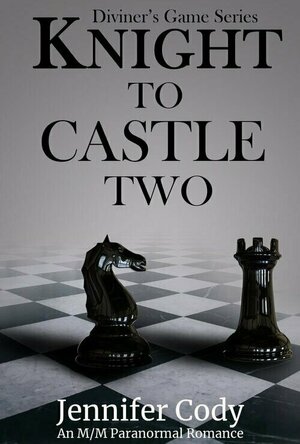
Knight to Castle Two (Diviner's Game #2)
Book
Loki: Surviving as a human in the world of Non-Humans means that every breath I’ve taken for...
MM Paranormal Romance Step-Brothers
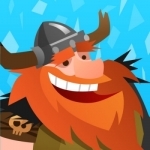
Die With Glory
Games and Entertainment
App
Die with Glory is an epic adventure game where your goal is to die in glorious fashion. You must...
Mark @ Carstairs Considers (2460 KP) rated The Timeless One in Books
Oct 26, 2020
Sets the Stage Well for a Climactic Battle
Fort Fitzgerald is home for the first time in months, separated from all the new friends he’s made. He, Rachel, and Jia have one year to re-find Excalibur and train to fight the Timeless One. Meanwhile, Fort also has a baby dragon he not only has to try to hide from his guardians but also from someone who has been sent to find it.
That’s all I am going to tease for fear of spoiling something from this book or previous books. Don’t start here if you are new to the series since there will be spoilers for some of the twists from earlier books in this one. But fans of the series will enjoy it. I found the post-apocalyptic feeling I had reading the previous book wasn’t as strong in this one. The story is engaging with twists and turns, but there was more humor, with I enjoyed. The characters are as sharp as ever, although Fort spends a bit more time here away from the other series regulars. This book walks the fine line between setting up the next (and final in the series) without leaving us disappointed in this part of the saga, and it does it perfectly. There is definitely a climax to this book, but the cliffhangers will leave other fans as anxious as I am to find out what happens to Fort next.
That’s all I am going to tease for fear of spoiling something from this book or previous books. Don’t start here if you are new to the series since there will be spoilers for some of the twists from earlier books in this one. But fans of the series will enjoy it. I found the post-apocalyptic feeling I had reading the previous book wasn’t as strong in this one. The story is engaging with twists and turns, but there was more humor, with I enjoyed. The characters are as sharp as ever, although Fort spends a bit more time here away from the other series regulars. This book walks the fine line between setting up the next (and final in the series) without leaving us disappointed in this part of the saga, and it does it perfectly. There is definitely a climax to this book, but the cliffhangers will leave other fans as anxious as I am to find out what happens to Fort next.
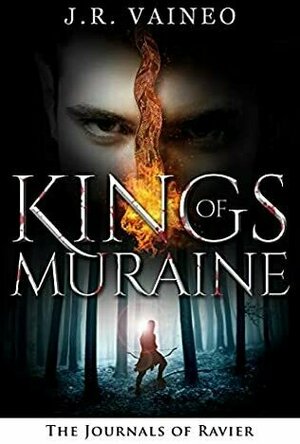
Kings of Muraine (The Journals of Ravier #1)
Book
A YEAR TO THE DAY since my dad, Lance Ravier, died. Somehow, it felt like just yesterday. The shock...
Dark Epic Fantasy
Kyera (8 KP) rated Heir of Fire in Books
Feb 1, 2018
Heir of Fire is the third book in the Throne of Glass series, that being said you will be spoiled if you haven't read the first two books. I feel like there is a marked improvement in the author's writing quality in this book and it will continue to grow as she gets more experience writing.
In this book, Celaena must finally face the truth of her past and the memories that she has tried to forget for the last decade. We see her as less of the snarky assassin and more of the stubborn, determined true Queen in this book. She must fight to prove herself and earn the answers from the Fae Queen Maeve about the Wyrdkeys. The development that we see over the course of this novel is brilliant. I loved seeing Celaena shed some of her old self and embrace the person she was meant to be. The Queen, Aelin Fireheart has officially made her debut in this novel.
Through events in this novel and flashbacks, we get a glimpse into Aelin's young life which was the perfect way to add to her character's development. It also introduced us to Aedion, her cousin, and fiercest ally, even though they haven't seen one another in a decade. It was so heartwarming to see his dedication, even after all that time to the family he loved so dearly.
Dorian doesn't have a major role or experience significant growth in this book, but he is better able to control his powers. With so many storylines and main characters, I feel like its understandable that he didn't get as much time but he still feels lost in the shuffle. He's especially lost because Celaena is sent away on a mission by the King and Chaol has essentially abandoned him, so he is on his own. The honourable Chaol struggles immensely in this book because he's so used to his worldview and is have trouble coming to grips with the changes that have rocked the foundation of everything he believes in.
My favourite addition to this book in terms of characters was Rowan Whitethorn. He was the first true Fae that we spent time with and got to watch evolve, even though he was centuries old and should have been set in his ways. He pushed Aelin and was exactly what she needed to rebuild herself after the events of Crown of Midnight. The two also had this back and forth that was entertaining to read.
The biggest change in perspective was the introduction of the Ironteeth witches and Manon's viewpoint. She is a tough, vicious, ruthless Blackbeak witch. At first, you might not like the switch and just be waiting for it to go back to the familiar characters we've grown to love but after a while, I think you'll be invested. The Wyvern, Abraxos, was by far my favourite non-human (and probably my favourite character, period) in this series. I'm a sucker for animals and he reminds me of Toothless from How to Train Your Dragon. He is tough, protective, loving and stubborn, despite his not so rosy life.
This book continues the world development and brings us out of Adarlan. Although we switch perspectives and see the goings-on in the castle - the focus is on Aelin and her journey. We get to see a demi-Fae settlement on the border of Doranelle and are introduced to more characters who worm their way into your heart.
There's not much else I can say without spoilers, but I definitely enjoyed this read immensely and cannot wait to continue my re-read.
In this book, Celaena must finally face the truth of her past and the memories that she has tried to forget for the last decade. We see her as less of the snarky assassin and more of the stubborn, determined true Queen in this book. She must fight to prove herself and earn the answers from the Fae Queen Maeve about the Wyrdkeys. The development that we see over the course of this novel is brilliant. I loved seeing Celaena shed some of her old self and embrace the person she was meant to be. The Queen, Aelin Fireheart has officially made her debut in this novel.
Through events in this novel and flashbacks, we get a glimpse into Aelin's young life which was the perfect way to add to her character's development. It also introduced us to Aedion, her cousin, and fiercest ally, even though they haven't seen one another in a decade. It was so heartwarming to see his dedication, even after all that time to the family he loved so dearly.
Dorian doesn't have a major role or experience significant growth in this book, but he is better able to control his powers. With so many storylines and main characters, I feel like its understandable that he didn't get as much time but he still feels lost in the shuffle. He's especially lost because Celaena is sent away on a mission by the King and Chaol has essentially abandoned him, so he is on his own. The honourable Chaol struggles immensely in this book because he's so used to his worldview and is have trouble coming to grips with the changes that have rocked the foundation of everything he believes in.
My favourite addition to this book in terms of characters was Rowan Whitethorn. He was the first true Fae that we spent time with and got to watch evolve, even though he was centuries old and should have been set in his ways. He pushed Aelin and was exactly what she needed to rebuild herself after the events of Crown of Midnight. The two also had this back and forth that was entertaining to read.
The biggest change in perspective was the introduction of the Ironteeth witches and Manon's viewpoint. She is a tough, vicious, ruthless Blackbeak witch. At first, you might not like the switch and just be waiting for it to go back to the familiar characters we've grown to love but after a while, I think you'll be invested. The Wyvern, Abraxos, was by far my favourite non-human (and probably my favourite character, period) in this series. I'm a sucker for animals and he reminds me of Toothless from How to Train Your Dragon. He is tough, protective, loving and stubborn, despite his not so rosy life.
This book continues the world development and brings us out of Adarlan. Although we switch perspectives and see the goings-on in the castle - the focus is on Aelin and her journey. We get to see a demi-Fae settlement on the border of Doranelle and are introduced to more characters who worm their way into your heart.
There's not much else I can say without spoilers, but I definitely enjoyed this read immensely and cannot wait to continue my re-read.
BankofMarquis (1832 KP) rated Megamind (2010) in Movies
Dec 5, 2018
Holds up well - very entertaining
When one thinks of Animation studios, the first 2 names that come to mind are, probably, PIXAR and DISNEY ANIMATION. Coming in 3rd on that list is probably DREAMWORKS with such hit franchises as SHREK, HOW TO TRAIN YOUR DRAGON and KUNG FU PANDA. But Dreamworks also made a few, fun "one-off" films (animation films that spawned no sequels), most notably OVER THE HEDGE, SHARK TALE and the animated film I'm reviewing today, MEGAMIND.
What? You don't remember MEGAMIND? Well, you should. Spooffing SuperHero films by focusing on the villain, Megamind stars some incredible voice talents - Will Ferrell, Tina Fey, Brad Pitt, David Cross and Johan Hill - and tells the cautionary tale of "be careful what you wish for, you just might get it."
Ferrell, of course, stars as the titular Megamind, a Super Villain who after years of failure, finally defeats SuperHero Megaman (Brad Pitt). He realizes that without his arch-nemesis, his life is empty and begins to search for meaning in his life. Along for the journey is a reporter (Tina Fey), her Cameraman (Jonah Hill) and Megamind's Minion (long before Despicable Me), David Cross.
Sounds like pretty standard stuff, huh? But in the hands of comedians like Ferrell, Fey, Cross and Hill it elevates itself to something more. The comic sensibilities make a little more sense to me when I realized that Ben Stiller and Justin Theroux were the Excecutive Producers - both very funny men. They, smartly, turned the Direction of this film over to Dreamworks Animation veteran Tom McGrath (REN & STIMPY, some of the MADAGASCAR films and THE BOSS BABY), he keeps the events of the film moving swiftly and simply, being really clear of the events and motivations of the players while not getting too clever and complex.
I caught this film on HBO, and am sure you can stream it elsewhere. If you're looking for a fun film for the whole family this Holiday Season - especially one without Princes & Princesses in it - check out MEGAMIND, it's a fun way to spend a few hours.
Letter Grade: A-
8 (out of 10) stars and you can take that to the Bank(ofMarquis)
What? You don't remember MEGAMIND? Well, you should. Spooffing SuperHero films by focusing on the villain, Megamind stars some incredible voice talents - Will Ferrell, Tina Fey, Brad Pitt, David Cross and Johan Hill - and tells the cautionary tale of "be careful what you wish for, you just might get it."
Ferrell, of course, stars as the titular Megamind, a Super Villain who after years of failure, finally defeats SuperHero Megaman (Brad Pitt). He realizes that without his arch-nemesis, his life is empty and begins to search for meaning in his life. Along for the journey is a reporter (Tina Fey), her Cameraman (Jonah Hill) and Megamind's Minion (long before Despicable Me), David Cross.
Sounds like pretty standard stuff, huh? But in the hands of comedians like Ferrell, Fey, Cross and Hill it elevates itself to something more. The comic sensibilities make a little more sense to me when I realized that Ben Stiller and Justin Theroux were the Excecutive Producers - both very funny men. They, smartly, turned the Direction of this film over to Dreamworks Animation veteran Tom McGrath (REN & STIMPY, some of the MADAGASCAR films and THE BOSS BABY), he keeps the events of the film moving swiftly and simply, being really clear of the events and motivations of the players while not getting too clever and complex.
I caught this film on HBO, and am sure you can stream it elsewhere. If you're looking for a fun film for the whole family this Holiday Season - especially one without Princes & Princesses in it - check out MEGAMIND, it's a fun way to spend a few hours.
Letter Grade: A-
8 (out of 10) stars and you can take that to the Bank(ofMarquis)
